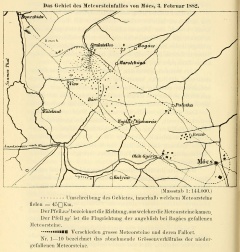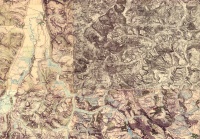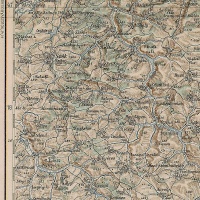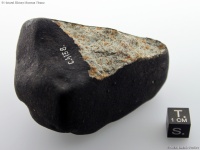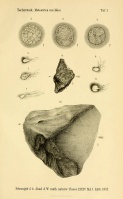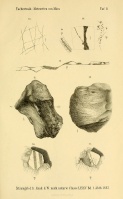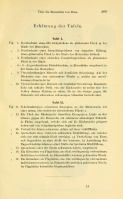(Unless otherwise stated, the copyright of the materials included belong to Jan Woreczko & Wadi.)
Mocs
Z Wiki.Meteoritica.pl
(→Kolekcje) |
m (→Bibliografia) |
||
| Linia 152: | Linia 152: | ||
== [[Bibliografia]] == | == [[Bibliografia]] == | ||
| - | * Bielz Eduard Albert, (1882), '''Der Meteorsteinfall von [[Mocs]], in der Mezöség Siebenbürgens''', ''Verhandlungen und Mitteilungen des Siebenbürgischen Vereins für Naturwissenschaften zu Hermannstadt'', 32, 1882, s. 126-147. Plik [http://www.zobodat.at/D/runD/D/cacheD/personen_details.php?nr=6557 PDF] | + | * Bielz Eduard Albert, (1882), '''Der Meteorsteinfall von [[Mocs]], in der Mezöség Siebenbürgens''', ''Verhandlungen und Mitteilungen des Siebenbürgischen Vereins für Naturwissenschaften zu Hermannstadt'', 32, 1882, s. 126-147. Plik [http://www.zobodat.at/D/runD/D/cacheD/personen_details.php?nr=6557 PDF]; plik {{Link-BHL |item=105563}}. |
* {{Brandstätter (2013) |page=74-75, 104, 206-207, 211}} | * {{Brandstätter (2013) |page=74-75, 104, 206-207, 211}} | ||
| Linia 160: | Linia 160: | ||
* {{Döll (1882)}} | * {{Döll (1882)}} | ||
| - | * Döll Eduard, (1882), '''Ueber die Form und Oberfläche der Meteorsteine von [[Mocs]] und eine merkwürdige Fallzone, in welche dieser Fall gehört''', ''Verhandlungen der Kaiserlich-Königlichen Geologischen Reichsanstalt'', Jahrgang 1882, nr 9, s. 159-160. Plik | + | * Döll Eduard, (1882), '''Ueber die Form und Oberfläche der Meteorsteine von [[Mocs]] und eine merkwürdige Fallzone, in welche dieser Fall gehört''', ''Verhandlungen der Kaiserlich-Königlichen Geologischen Reichsanstalt'', Jahrgang 1882, nr 9, s. 159-160. Plik {{Link-BHL |item=120936}}; plik [http://www.landesmuseum.at/pdf_frei_remote/VerhGeolBundesanstalt_1882_0159-0160.pdf PDF]. |
* Döll Eduard, (1883), '''Der Meteorsteinfall von [[Mocs]] in Siebenbürgen''', ''Monatsblätter des Wissenschaftlichen Club in Wien'', 1883, s. 52-54. Plik {{Djvu|Döll_1883_(Monatsblätter_Wien).djvu|DjVu}}. | * Döll Eduard, (1883), '''Der Meteorsteinfall von [[Mocs]] in Siebenbürgen''', ''Monatsblätter des Wissenschaftlichen Club in Wien'', 1883, s. 52-54. Plik {{Djvu|Döll_1883_(Monatsblätter_Wien).djvu|DjVu}}. | ||
| Linia 174: | Linia 174: | ||
* {{Koblitz MetBase}} | * {{Koblitz MetBase}} | ||
| - | * Koch Antal, (1882), '''Bericht über den am 3. Februar d. J. stattgefundenen Meteorsteinfall von [[Mocs]] in Siebenbürgen''', ''Sitzungsberichte der mathematisch-naturwissenschaftliche Classe der Kaiserlichen Akademie der Wissenschaften'', 85, Abt. 1, 1882, s. 116-132.<ref>z [[:Image:Mocs_map_(Koch_1882).jpg|mapą]] rejonu spadku</ref> Plik | + | * Koch Antal, (1882), '''Bericht über den am 3. Februar d. J. stattgefundenen Meteorsteinfall von [[Mocs]] in Siebenbürgen''', ''Sitzungsberichte der mathematisch-naturwissenschaftliche Classe der Kaiserlichen Akademie der Wissenschaften'', 85, Abt. 1, 1882, s. 116-132.<ref>z [[:Image:Mocs_map_(Koch_1882).jpg|mapą]] rejonu spadku</ref> Plik {{Link-BHL |item=31080}}. |
* Koch Antal, (1882b), '''Jelentés az 1882. febr. 3-iki [[Mocs|mócsi]] meteorkőhullásról''', ''Orvos-Természettudományi Értesítő II. Természettudományi Szak'', 7, 1882, s. 89-104.<ref>zawiera wykaz znalezionych okazów i [[:Image:Mocs_map_(Koch_1882b).jpg|mapę]] rejonu spadku</ref> Plik [http://epa.oszk.hu/01500/01509/00010/pdf/089-104.pdf PDF]. | * Koch Antal, (1882b), '''Jelentés az 1882. febr. 3-iki [[Mocs|mócsi]] meteorkőhullásról''', ''Orvos-Természettudományi Értesítő II. Természettudományi Szak'', 7, 1882, s. 89-104.<ref>zawiera wykaz znalezionych okazów i [[:Image:Mocs_map_(Koch_1882b).jpg|mapę]] rejonu spadku</ref> Plik [http://epa.oszk.hu/01500/01509/00010/pdf/089-104.pdf PDF]. | ||
| Linia 180: | Linia 180: | ||
* Koch Antal, (1882c), '''Pótjelentés a folyó év febr. 3-ki [[Mocs|mócsi]] meteorkő-hullásról''', ''Orvos-Természettudományi Értesítő II. Természettudományi Szak'', 7, 1882, s. 137-146. Plik [http://epa.oszk.hu/01500/01509/00011/pdf/137-146.pdf PDF]. | * Koch Antal, (1882c), '''Pótjelentés a folyó év febr. 3-ki [[Mocs|mócsi]] meteorkő-hullásról''', ''Orvos-Természettudományi Értesítő II. Természettudományi Szak'', 7, 1882, s. 137-146. Plik [http://epa.oszk.hu/01500/01509/00011/pdf/137-146.pdf PDF]. | ||
| - | * Koch Antal, (1882d), '''''Mittheilung über den am 3. Februar 1882 bei [[Mocs|Mócs]] unweit Klausenburg stattgefundenen Meteoritenfall''''', ''Anzeiger der Kaiserlichen Akademie der Wissenschaften. Mathematisch-Naturwissenschaftliche Classe'', 19, nr VI, 1882, s. 52-53. Plik | + | * Koch Antal, (1882d), '''''Mittheilung über den am 3. Februar 1882 bei [[Mocs|Mócs]] unweit Klausenburg stattgefundenen Meteoritenfall''''', ''Anzeiger der Kaiserlichen Akademie der Wissenschaften. Mathematisch-Naturwissenschaftliche Classe'', 19, nr VI, 1882, s. 52-53. Plik {{Link-BHL |item=89661}}. |
* Koch Antal, (1883), '''Ergänzender Bericht über den Meteoritenfall bei [[Mocs]] in Siebenburgen am 3. Februar 1882''', ''Tschermaks Mineralogische und Petrographische Mitteilungen'', 5, 1883, s. 234-244. Plik [http://archive.org/details/tschermaksminer27unkngoog {{!IA}}]. | * Koch Antal, (1883), '''Ergänzender Bericht über den Meteoritenfall bei [[Mocs]] in Siebenburgen am 3. Februar 1882''', ''Tschermaks Mineralogische und Petrographische Mitteilungen'', 5, 1883, s. 234-244. Plik [http://archive.org/details/tschermaksminer27unkngoog {{!IA}}]. | ||
| Linia 194: | Linia 194: | ||
* {{Török (1882b)}} | * {{Török (1882b)}} | ||
| - | * Tschermak Gustav, (1882), '''Über die Meteoriten von [[Mocs]] (Mit 2 Tafeln.)''', ''Sitzungsberichte der mathematisch-naturwissenschaftliche Classe der Kaiserlichen Akademie der Wissenschaften'', 85, 1882, s. 195-209.<ref>dodatkowo dwie plansze: [[:Image:Mocs_Taf_I_(Tschermak_1882).jpg|Taf. I]] i [[:Image:Mocs_Taf_II_(Tschermak_1882).jpg|Taf. II]]</ref> Plik | + | * Tschermak Gustav, (1882), '''Über die Meteoriten von [[Mocs]] (Mit 2 Tafeln.)''', ''Sitzungsberichte der mathematisch-naturwissenschaftliche Classe der Kaiserlichen Akademie der Wissenschaften'', 85, 1882, s. 195-209.<ref>dodatkowo dwie plansze: [[:Image:Mocs_Taf_I_(Tschermak_1882).jpg|Taf. I]] i [[:Image:Mocs_Taf_II_(Tschermak_1882).jpg|Taf. II]]</ref> Plik {{Link-BHL |item=31080}}. |
{{Koblitz References |1=After appearance of luminous meteor, and detonations, a shower of stones fell; the number has been estimated at 3000 and the total weight at about 300kg, the largest stone weighing about 56kg, A.Koch, Sitzungsber. Akad. Wiss. Wien, Math.-naturwiss. Kl., 1882, 85, (1), p.116, A.Koch, Tschermaks Min. Petr. Mitt., 1883, 5, p.234, G.von Niessl, Sitzungsber. Akad. Wiss. Wien, Math.-naturwiss. Kl., 1884, 89, (2), p.283, M.H.Hey, Cat. Met., 1966, p.310. Analysis, 21.81% total Fe, B.Mason and H.B.Wiik, Am. Mus. Novit., 1961, (2069). Olivine Fa24, B.Mason, GCA, 1963, 27, p.1011. Further analysis, 21.82% total Fe, V.Y.Kharitonova, Meteoritika, 1965, 26, p.146. Study of metal phase, H.C.Urey and T.Mayeda, GCA, 1959, 17, p.113. Study of thermal release of noble gases from mineral separates, J.C.Huneke et al., Meteorite Research, ed. P.M.Millman, D.Reidel, Dordrecht, Holland, 1969, p.901. Metallography and Ni-concentration profiles of taenite in metal grains, G.J.Taylor and D.Heymann, GCA, 1971, 35, p.175. Ni and Ir contents, O.Müller et al., GCA, 1971, 35, p.1121. Uranium content, D.E.Fisher, GCA, 1972, 36, p.15. Partial INAA, R.A.Schmitt et al., Meteoritics, 1972, 7, p.131. Ga and Ge contents of metal phase, C.-L.Chou and A.J.Cohen, GCA, 1973, 37, p.315. Al-26 data, I.R.Cameron and Z.Top, GCA, 1975, 39, p.1705. Oxygen isotopic composition of mineral fractions, R.N.Clayton et al., Earth Planet. Sci. Lett., 1976, 30, p.10. Trace element abundances, references, E.Rambaldi, Earth Planet. Sci. Lett., 1977, 33, p.407, A.L.Graham et al., Cat. Met., 1985, p.239. Infrared photometry, albedo, JHK colors, M.Leake et al., Meteoritics, 1978, 13, p.101. Oxygen isotopic composition, N.Onuna et al., GCA, 1972, 36, p.157; see also, R.N.Clayton et al., GCA, 1991, 55, p.2317. Exposure age based on spallogenic Mn-53 content, P.Englert and W.Herr, GCA, 1978, 42, p.1635. Ti, Zr and Hf abundances, M.Shima, GCA, 1979, 43, p.353. Cosmic ray tracks, N.Bhandari et al., Nucl. Tracks, 1980, 4, p.213. Pu, Rb-Sr and Sm-Nd isotopic composition of phospates, J.C.Brannon et al., LPSC, 1987, 18, p.121 (abs.). Kr-Kr exposure age, 14.9±2.5 Ma, O.Eugster, LPSC, 1988, 19, p.311 (abs.). Boron abundance and isotopic composition, M.Zhai and D.M.Shaw, Meteoritics, 1994, 29, p.607; see also, M.Zhai et al., GCA, 1996, 60, p.4877. Study of shock effects in olivine, fayalite content, shock stage S5, O.G.Iancu et al., Meteoritics, 1995, 30, p.524 (abs.). Classification as L5-6, mineral and bulk chemical analysis, olivine Fa23-27, pyroxene Fs18-23, shock classification S3-5, Y.Miura et al., Proc. NIPR Symp. Ant. Met., 1995, (8), p.153. Cosmogenic radionuclide profile of the Mocs strewn field, T.E.Ferko and M.E.Lipschutz, LPSC, 1996, 27, p.357 (abs.). Bulk density and porosity, M.Terho et al., Studia Geophysica et Geodaedica, 1993, 37, p.65; see also, D.T.Britt and G.J.Consolmagno, MAPS, 2003, 38, p.1161; D.T.Britt and G.J.Consolmagno, LPSC, 1997, 28, p.159 (abs.); G.J.Consolmagno and D.T.Britt, MAPS, 1998, 33, p.1231. EPMA analysis of fusion crust, M.J.Genge and M.M.Grady, MAPS, 1999, 34, p.341. Determination of bulk density, S.L.Wilkison and M.S.Robinson, MAPS, 2000, 35, p.1203. Exposure history based on cosmogenic radionuclide and noble gas data, T.E.Ferko et al., MAPS, 2000, 35, p.1215. Magnetic susceptibility, P.Rochette et al., MAPS, 2003, 38, p.251. Density and porosity, S.L.Wilkinson et al., MAPS, 2003, 38, p.1533. Cu isotopic composition, J.M.Luck et al., GCA, 2003, 67, p.143. Zn abundance and isotopic composition, J.-M.Luck et al., GCA, 2005, 69, p.5351.}} | {{Koblitz References |1=After appearance of luminous meteor, and detonations, a shower of stones fell; the number has been estimated at 3000 and the total weight at about 300kg, the largest stone weighing about 56kg, A.Koch, Sitzungsber. Akad. Wiss. Wien, Math.-naturwiss. Kl., 1882, 85, (1), p.116, A.Koch, Tschermaks Min. Petr. Mitt., 1883, 5, p.234, G.von Niessl, Sitzungsber. Akad. Wiss. Wien, Math.-naturwiss. Kl., 1884, 89, (2), p.283, M.H.Hey, Cat. Met., 1966, p.310. Analysis, 21.81% total Fe, B.Mason and H.B.Wiik, Am. Mus. Novit., 1961, (2069). Olivine Fa24, B.Mason, GCA, 1963, 27, p.1011. Further analysis, 21.82% total Fe, V.Y.Kharitonova, Meteoritika, 1965, 26, p.146. Study of metal phase, H.C.Urey and T.Mayeda, GCA, 1959, 17, p.113. Study of thermal release of noble gases from mineral separates, J.C.Huneke et al., Meteorite Research, ed. P.M.Millman, D.Reidel, Dordrecht, Holland, 1969, p.901. Metallography and Ni-concentration profiles of taenite in metal grains, G.J.Taylor and D.Heymann, GCA, 1971, 35, p.175. Ni and Ir contents, O.Müller et al., GCA, 1971, 35, p.1121. Uranium content, D.E.Fisher, GCA, 1972, 36, p.15. Partial INAA, R.A.Schmitt et al., Meteoritics, 1972, 7, p.131. Ga and Ge contents of metal phase, C.-L.Chou and A.J.Cohen, GCA, 1973, 37, p.315. Al-26 data, I.R.Cameron and Z.Top, GCA, 1975, 39, p.1705. Oxygen isotopic composition of mineral fractions, R.N.Clayton et al., Earth Planet. Sci. Lett., 1976, 30, p.10. Trace element abundances, references, E.Rambaldi, Earth Planet. Sci. Lett., 1977, 33, p.407, A.L.Graham et al., Cat. Met., 1985, p.239. Infrared photometry, albedo, JHK colors, M.Leake et al., Meteoritics, 1978, 13, p.101. Oxygen isotopic composition, N.Onuna et al., GCA, 1972, 36, p.157; see also, R.N.Clayton et al., GCA, 1991, 55, p.2317. Exposure age based on spallogenic Mn-53 content, P.Englert and W.Herr, GCA, 1978, 42, p.1635. Ti, Zr and Hf abundances, M.Shima, GCA, 1979, 43, p.353. Cosmic ray tracks, N.Bhandari et al., Nucl. Tracks, 1980, 4, p.213. Pu, Rb-Sr and Sm-Nd isotopic composition of phospates, J.C.Brannon et al., LPSC, 1987, 18, p.121 (abs.). Kr-Kr exposure age, 14.9±2.5 Ma, O.Eugster, LPSC, 1988, 19, p.311 (abs.). Boron abundance and isotopic composition, M.Zhai and D.M.Shaw, Meteoritics, 1994, 29, p.607; see also, M.Zhai et al., GCA, 1996, 60, p.4877. Study of shock effects in olivine, fayalite content, shock stage S5, O.G.Iancu et al., Meteoritics, 1995, 30, p.524 (abs.). Classification as L5-6, mineral and bulk chemical analysis, olivine Fa23-27, pyroxene Fs18-23, shock classification S3-5, Y.Miura et al., Proc. NIPR Symp. Ant. Met., 1995, (8), p.153. Cosmogenic radionuclide profile of the Mocs strewn field, T.E.Ferko and M.E.Lipschutz, LPSC, 1996, 27, p.357 (abs.). Bulk density and porosity, M.Terho et al., Studia Geophysica et Geodaedica, 1993, 37, p.65; see also, D.T.Britt and G.J.Consolmagno, MAPS, 2003, 38, p.1161; D.T.Britt and G.J.Consolmagno, LPSC, 1997, 28, p.159 (abs.); G.J.Consolmagno and D.T.Britt, MAPS, 1998, 33, p.1231. EPMA analysis of fusion crust, M.J.Genge and M.M.Grady, MAPS, 1999, 34, p.341. Determination of bulk density, S.L.Wilkison and M.S.Robinson, MAPS, 2000, 35, p.1203. Exposure history based on cosmogenic radionuclide and noble gas data, T.E.Ferko et al., MAPS, 2000, 35, p.1215. Magnetic susceptibility, P.Rochette et al., MAPS, 2003, 38, p.251. Density and porosity, S.L.Wilkinson et al., MAPS, 2003, 38, p.1533. Cu isotopic composition, J.M.Luck et al., GCA, 2003, 67, p.143. Zn abundance and isotopic composition, J.-M.Luck et al., GCA, 2005, 69, p.5351.}} | ||
Wersja z 18:09, 27 sty 2018
| Mocs → | |
| 280px | |
| Spadek | |
| Lokalizacja | Cluj[3], Rumunia |
| Położenie[4] | 46°48'N, 24°02'E |
| Data | 3 lutego 1882 roku, 16:00 (piątek) |
| Charakterystyka | |
| Typ | chondryt zwyczajny L5-6[5] |
| Masa | 300 kg, największy okaz 35,7 kg[1] |
| Liczba okazów | ~3000 okazów, deszcz meteorytów |
| Cechy | stopień szokowy S3-5 |
| Meteoritical Bulletin Database | |
| Synonimy → | |
| w NHM Cat: Bare, Gjilatelke, Gyulateke, Gyulatelke, Keszu, Klausemburg, Klausenburg[3], Kyolos, Marokháza, Mociu, Modok, Olah Gyéres, Palatka, Vajda-Kamaras, Visa; w MetBase: Marokhaza, Moci; po rumuńsku: Mociu; po węgiersku: Mócsi | |
Spadek deszczu meteorytów 3 lutego 1882 roku (piątek) w okolicy miejscowości Mociu (dawniej Mocs) w Rumunii (chondryt zwyczajny L5-6[5], TKW 300 kg).
Jasną kulę ognia zaobserwowano początkowo powyżej krainy Hont vármegye na północ od Budapesztu. Zmierzała ona w kierunku południowo-wschodnim nad Transylwanię. Spadkowi meteorytów towarzyszyły trzy silne detonacje i dźwięki podobne do grzechotania i bzyczenia. Na północny-zachód od rumuńskiego miasta Mocs (obecnie Mociu) i w samym mieście spadł deszcz meteorytów. Na silnie wydłużonym obszarze (elipsie spadku) rozciągającym się z NW na SE o powierzchni około 60 km2 zebrano po spadku około 3000 okazów meteorytów. Największy znaleziono w Mocs i ważył 35,7 kg[1]. Rozkład wielkości okazów odpowiada prostemu modelowi fragmentacji i dystrybucji mas. Opis okoliczności spadku, wagi i cechy znalezionych okazów oraz ich ilość i lokalizację opisał Koch w swoich artykułach (Koch 1882, 188b, 1882c, 1883).
Był to jeden z najliczniejszych deszczy meteorytów w Europie. Wielkość obszaru spadku meteorytów Mocs jest porównywalna z elipsą spadku meteorytu Pułtusk.
Brak informacji o ewentualnych późniejszych znaleziskach okazów z tego spadku.
Kolekcje
Okazy i fragmenty meteorytu Mocs w największych kolekcjach:
Zbiór waga okazów
(Koblitz MetBase)uwagi Vienna, Naturhist. Mus. 118 kg około 1600 okazów[6] Cluj, Min. Mus. Univ.[7] 37,0 kg w tym okaz około 32,7 kg[1] Budapest, Nat. Mus. 16,1 kg[8] London, Nat. Hist. Mus. 14,8 kg Washington, Natl. Mus. Nat. Hist. 7 kg Budapest, Eötvös Lorand Univ. 6448 g Chicago, Field Mus. Nat. Hist. 6066 g Paris, Mus. d'Hist. Nat. 3,33 kg (…) Warsaw, Geol. Inst., Polish Acad. Sci.[9] 212 g 213,37 cs (Pilski 2001) Wroclaw, Dept. Min. Petrol., Univ. 22 g 21,5 g (hs) (Pilski 2001)
W polskich prywatnych kolekcjach znajdują się tylko małe fragmenty tego meteorytu.
Znany handlarz meteorytów F. Krantz[10] miał w swojej ofercie wiele okazów tego meteorytu. Na przykład okazy z dobrze zachowaną skorupą (schön umrindet) o masach 89,0, 80,5, 22,2 i 20,8 g oferował w cenach, odpowiednio: 35, 32, 9 i 8 ℳ (Mark)![11]
Lokalizacja
(B) Baré, (G) Gyulatelka, (K) Keszü, (M) Marokháza, Mocs, (P) Palatka, (O) Oláh Gyéres, (V) Visa, Vajda Kamarás
Muzeum w Cluj-Napoca
Schematyczny rejon spadku
* W 2018 roku Google zmieniło zasady działania apletu, mapa może wyświetlać się niepoprawnie (pomaga Ctrl+F5); więcej → Szablon:GEMap-MyWiki
Obecnie rumuńska miejscowość Mocs nazywa się Mociu.
Bolid leciał od północnego zachodu na południowy wschód.
Spadło (zebrano) około 3000 okazów na obszarze o eliptycznym kształcie, rozmiarze ~4×15 km (3×20 km wg Koch 1883) i powierzchni około 60 km2.
Wielkość zbieranych kamieni rosła od strony NW obszaru w kierunku SE. Najmniejsze okazy znaleziono w okolicach Gyulatelka (obecnie Coasta), Visa (Vişea) i Marokháza (Tăuşeni); średnie: Baré (Bărăi), Vajda Kamarás (Vaida-Cămăraş) i Palatka (Pălatca); największe: Oláh Gyéres (Ghirişu Român), Keszü (Chesău) i Mocs (obecnie Mociu). Natomiast największy okaz o wadze około 35,7 kg[1] spadł w samym Mocs (Koch 1882, 1882b, 1882c, 1883).
Największe okazy (Koch 1883):
Lokalizacja waga [kg] Mocs
Oláh Gyéres-Mocs
Oláh Gyéres
Palatka
Keszü
Vajda Kamarás
Keszü-Palatka35,7
8,5
8,37, 6,06, 5,6
8,15
4,6
3,194, 2,15
2,7, 2,13
- Rozkład okazów (Koch 1882c; w wykazie 911 okazów o łącznej wadze 174,115 kg):
Rejon liczba okazów sumaryczna waga
[kg]Gyulatelka–Visa–Marokháza
Baré–V.-Kamarás–Palatka
Oláh Gyéres–Keszü–Mocs
Mocs600
300
10
124,0
70,0
44,0
35,7
Nie znaleziono informacji o ewentualnych późniejszych znaleziskach okazów z tego spadku, ale szukać chyba warto.
Mapy
Mocs/Galerie
Okaz meteorytu Mocs ze zbiorów Muzeum Historii Naturalnej w Wiedniu (fot. © NHM, Ludovic Ferrière; za zgodą)
Meteoryty ze zbiorów Muzeum Historii Naturalnej w Budapeszcie (fot. Wadi & Jan Woreczko)
Gross-Divina main mass (MHN Budapeszt).jpg
Masa główna chondrytu zwyczajnego H5 Gross-Divina. Po lewej stronie dwa okazy meteorytu Mocs (8,465 i 2,235 kg), w prawym dolnym rogu meteoryt Ofehértó |
Okazy meteorytu Mocs (źródło: Tschermak 1882)
- Więcej → Mocs/Galerie
Bibliografia
- Bielz Eduard Albert, (1882), Der Meteorsteinfall von Mocs, in der Mezöség Siebenbürgens, Verhandlungen und Mitteilungen des Siebenbürgischen Vereins für Naturwissenschaften zu Hermannstadt, 32, 1882, s. 126-147. Plik PDF; plik DjVu.
- Brandstätter Franz, Ferrière Ludovic, Köberl Christian, (2013), Meteorites: Witnesses of the Origin of the Solar System (Meteoriten: Zeitzeugen der Entstehung des Sonnensystems), Edition Lammerhuber, 2013, ss. 272, (s. 74-75, 104, 206-207, 211).[12] ISBN 978-3901753435.
- Brezina Aristides, (1894), Die Gestaltung der Meteoriten (Vortrag, gehalten den 17. Januar 1894) (Mit 32 Abbildungen im Texte), Schriften des Vereins zur Verbreitung naturwissenschaftlicher Kenntnisse, 34, 1894, s. 251-274, (s. 258-261) (ilustracje).[13] Plik PDF.
- Döll Eduard, (1882), Die Meteorsteine von Mócs. Bemerkungen über die rundlichen Vertiefungen, die Gestalt und Rotation der Meteoriten und eine Fallzone derselben (Mit 4 Lichtdruck-Tafeln (Nr. V-VIII.), Jahrbuch der Kaiserlich-Königlichen Geologischen Reichsanstalt, 32, 1882, s. 421-434 (ilustracje).[14] Plik DjVu.
- Döll Eduard, (1882), Ueber die Form und Oberfläche der Meteorsteine von Mocs und eine merkwürdige Fallzone, in welche dieser Fall gehört, Verhandlungen der Kaiserlich-Königlichen Geologischen Reichsanstalt, Jahrgang 1882, nr 9, s. 159-160. Plik DjVu; plik PDF.
- Döll Eduard, (1883), Der Meteorsteinfall von Mocs in Siebenbürgen, Monatsblätter des Wissenschaftlichen Club in Wien, 1883, s. 52-54. Plik DjVuŹródło: Wiki.Meteoritica.pl.
- Döll Eduard, (1888), Zwei neue Kriterien für die Orientirung der Meteoriten (Mit vier Lichtdrucktafeln (Nr. VI-IX), Jahrbuch der Kaiserlich-Königlichen Geologischen Reichsanstalt, 37 (1887), 1888, s. 193-206 (ilustracje).[15] Plik DjVu.
- Goldschmidt Victor Moritz, (1895), Ueber Wustensteine und Meteoriten (Hierzu Taf. III u. IV.), Tschermaks Mineralogische und Petrographische Mitteilungen, 14, 1895, s. 131-142 (ilustracje).[16][17] Plik iDjVu.
- Grady Monica M., (2000), Catalogue of Meteorites. 5th Ed., Natural History Museum, Cambridge University Press, London, UK, 2000, (s. 336). ISBN 978-0521663038. Plik PDF.
- Hauer Franz Ritter von, (1882), Meteorsteinfall bei Klausenburg, Verhandlungen der Kaiserlich-Königlichen Geologischen Reichsanstalt, Jahrgang 1882, s. 77-78. Plik PDF.
- Koblitz Jörn, MetBase. Meteorite Data Retrieval Software, Version 7.3 (CD-ROM), Ritterhude, Germany 1994-2012. MetBase.
- Koch Antal, (1882), Bericht über den am 3. Februar d. J. stattgefundenen Meteorsteinfall von Mocs in Siebenbürgen, Sitzungsberichte der mathematisch-naturwissenschaftliche Classe der Kaiserlichen Akademie der Wissenschaften, 85, Abt. 1, 1882, s. 116-132.[18] Plik DjVu.
- Koch Antal, (1882b), Jelentés az 1882. febr. 3-iki mócsi meteorkőhullásról, Orvos-Természettudományi Értesítő II. Természettudományi Szak, 7, 1882, s. 89-104.[19] Plik PDF.
- Koch Antal, (1882c), Pótjelentés a folyó év febr. 3-ki mócsi meteorkő-hullásról, Orvos-Természettudományi Értesítő II. Természettudományi Szak, 7, 1882, s. 137-146. Plik PDF.
- Koch Antal, (1882d), Mittheilung über den am 3. Februar 1882 bei Mócs unweit Klausenburg stattgefundenen Meteoritenfall, Anzeiger der Kaiserlichen Akademie der Wissenschaften. Mathematisch-Naturwissenschaftliche Classe, 19, nr VI, 1882, s. 52-53. Plik DjVu.
- Koch Antal, (1883), Ergänzender Bericht über den Meteoritenfall bei Mocs in Siebenburgen am 3. Februar 1882, Tschermaks Mineralogische und Petrographische Mitteilungen, 5, 1883, s. 234-244. Plik Internet Archive.
- Łaptaś Andrzej, Ćwiżewicz Małgorzata, (1998), Meteoryty w zbiorach Muzeum Geologicznego w Krakowie, Muzeum Geologiczne ING PAN, Kraków 1998, ss. 34, (s. 20). ISBN 83-909970-1-0.
- Niessl Gustav von, (1884), Über die astronomischen Verhältnisse bei dem Meteoritenfalle von Mócs in Siebenbürgen am 3. Februar 1882, Sitzungsberichte der mathematisch-naturwissenschaftliche Classe der Kaiserlichen Akademie der Wissenschaften, 89, Abt. 2, 1884, s. 283-293. Plik PDF.
- Pilski Andrzej S., (2001), Meteoryty w zbiorach polskich, Olsztyn 2001.[20]
- Tokody László, Dudichné Vendl Mária, (1951), Magyarország meteoritgyűjteményei (Meteorite collections in Hungary), Akadémiai Kiadó, Budapest 1951, ss. 102. Plik
GIF.
- Török József, (1882b), A Magyar Birodalom meteoritjei (II. rész), Természettudományi Közlöny, XIV (160), 1882, s. 497-514. Plik PDF.
- Tschermak Gustav, (1882), Über die Meteoriten von Mocs (Mit 2 Tafeln.), Sitzungsberichte der mathematisch-naturwissenschaftliche Classe der Kaiserlichen Akademie der Wissenschaften, 85, 1882, s. 195-209.[21] Plik DjVu.
Przypisy
Zobacz również
- meteoryt Siewierz
Linki zewnętrzne
- Meteoritical Bulletin Database (MBD) – meteoryt Mocs
- Encyclopedia of Meteorites (EoM) – meteoryt Mocs
- Muzeum Historii Naturalnej w Wiedniu (Natural History Museum Vienna; Vienna, Naturhist. Mus.) – Naturhistorisches Museum Wien ● Die Meteoritensammlung ● Mineralogy & Petrography ● [katalogi → Partsch (1843); Brezina (1885); Brezina (1895); Brezina (1896); Berwerth (1903)]
- Muzeum Historii Naturalnej w Budapeszcie (Hungarian Natural History Museum, Budapest; Budapest, Nat. Mus.) – Magyar Természettudományi Múzeum Budapest ●
Katalog Tokody (1951) ● Meteorites in the Carpatian Basin (english); Kárpát-medencei meteoritok (hungarian)● [katalog → Ravasz (1969)] - Muzeum Mineralogiczne Uniwersytetu Babeș-Bolyai w Cluj-Napoca, Rumunia (Museum of Mineralogy, Babeș-Bolyai University, Cluj-Napoca; Cluj, Min. Mus. Univ.) – Muzeul de Mineralogie Universitatea Babeș-Bolyai din Cluj ● Colectia de meteoriti ● fotogaleria: Dan Uza ● [katalogi → Koch (1885); Bedelean (1979)]
- Vernadsky Institute of Geochemistry and Analytical Chemistry of Russian Academу of Sciences (The Laboratory of Meteoritics; Moscow, Vernadsky Inst. Geochem.) – Институт геохимии и аналитической химии им. В.И. Вернадского Российской академии наук (Лаборатория метеоритики), ГЕОХИ РАН ● Mocs ● [katalog → Явнель (1986)]
- Meteoryt Mocs w kolekcjach polskich – katalog PTMet ● Wadi & Jan Woreczko Collection
- woreczko.pl – Elipsa rozrzutu (strewn field, strewnfield, distribution ellipse) ● Stopień szokowy S, poziom zszokowania (shock stage)
- Wikipedia (HU) – Mócsi meteorit
- Portal Meteorite Picture of the Day – Mocs
